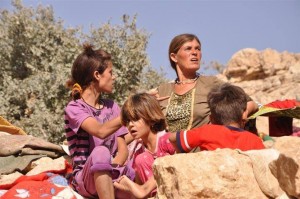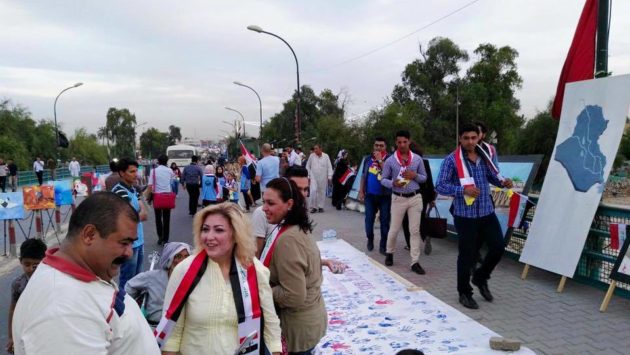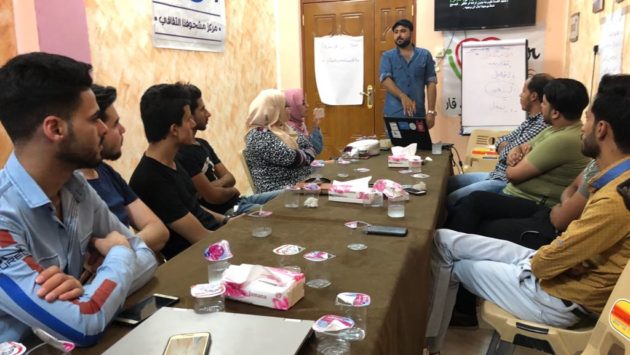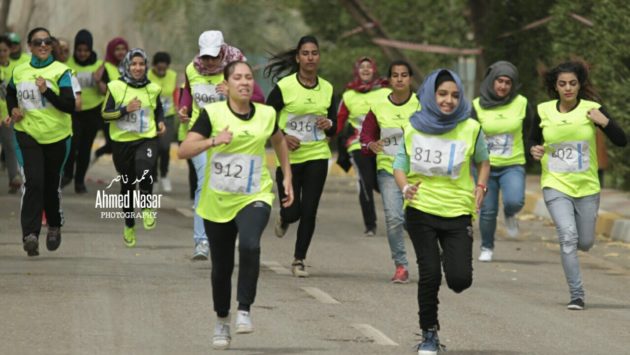When Does a Criminal Action Become Genocide? The Yazidis’ Case
Paper written for the Iraqi Social Forum participation in the WSF – Tunisia 2015.
By Hadi Aziz Ali, Judge and legal researcher.
It took the International Criminal Court more than half a century to get to its current form.
The formation of this court was based on the international heritage related to the Penal Liability and it was built on the Convention on the Prevention and Punishment of the Crime of Genocide adopted by the General Assembly of the United Nations in December of 1948.
The Court also adopted the International Law Principles that were acknowledged by Nurnberg’s court in 1950, and it was approved at the end of the diplomatic conference that was held in Rome on 17 July 1998, with the Rome Statute.
The basic system of the International Criminal Court was built with a preamble and 128 articles distributed into several sections. The crimes that are within its authority are as follows:
- Genocide crime: Article 6 of the statute
- Crimes against humanity: Article 7 of the statute
- War crimes: Article 8 of the statute
- Aggression crimes: Article 5 of the statute
Article 5 is quite controversial when applied, since there was no agreement on the definition of aggression, due to a conflict between the United States and the European Union on one hand and the so-called Third World countries, including Arab countries, on the other hand. Anyway, the United States and the other permanent members of the UN Security Council declared that the absence of a definition for aggression should not prevent the Security Council from practicing its authority according to the seventh chapter of the UN Charter.
Genocide The agreement defined this crime in Article 6, as any of the following acts committed with intent to destroy, in whole or in part, a national, ethnical, racial or religious group, as such:
(a) Killing members of the group
(b) Causing serious bodily or mental harm to members of the group
(c) Deliberately inflicting on the group conditions of life calculated to bring about its physical destruction in whole or in part
(d) Imposing measures intended to prevent births within the group
(e) Forcibly transferring children of the group to another group
The following is a summarized explanation of the genocide elements:
The material element of the crime: The material element of the crime is the material outer behavior that is considered to be a crime according to the law and is perceived by the senses; hence, what goes on in one’s mind of thoughts or desires is not considered to be a material element as long as it was not actually carried out.
It is also said that it can be an assault by the perpetrator on a law-protected interest. The assault is done in two cases:
- The positive action: perpetrator commits an action prevented by the law.
- The negative action: to refrain from an action imposed by the law.
The material element consists of three components:
- The criminal behavior
- The criminal result
- The causal relationship between behavior and result
The moral element of the crime: the unrighteous intention that is meant to cause the criminal result, through a latent power within the criminal’s self, consisting of perception and free choice. It is legally defined in Article 33 of the Iraqi Penal Code as: “Criminal intent is the existence in the mind of the offender of an intention to commit the criminal act with a view to realizing the consequence of the offence that has occurred or any other criminal consequence.” Almost the majority of the world’s penal laws agree on this definition. It is noted that the moral element of the 30th article of the Rome Statute does not differ from those in the world’s penal laws. They all agree on directing the perpetrator’s will to achieve the criminal result through the committed actions leading to those results with awareness, perception, and choice; hence, penal law commentators stated that the moral element is the penal liability.
No crime or penalty without legal provision principle: It means that any action, no matter how harmful it might be, even if it resulted in a high degree of prejudice, is not criminal or punishable unless there’s a legal provision that considers it a crime, which means that any harmful action is permissible unless there’s a criminalizing provision. That’s why the Rome Statute considered genocide as committing the following five forms:
- Killing the group’s members: The material element is there if the perpetrator committed the murder of one member, or more of a national, ethnical, racial or religious group; that the killing is committed with criminal intention, represented in directing the perpetrator’s will to destroy the mentioned group of the abovementioned affiliations; and that the prejudice is intended and not committed by accident or mistake. This form shows that the material element of the crime is established, even if the criminal behavior caused the murder of one person, as long as the unrighteous intention is directed toward the collective murder of that group of the abovementioned description.
- Causing serious physical or mental prejudice to the group’s members: when the committed action causes prejudice to a person or people. Prejudice can either be bodily harm, the so-called material prejudice, or serious moral prejudice; however, it is conditional that the abovedescribed prejudice is done to the person or people of a national, ethnical, racial or religious group, with a criminal intention to destroy the abovedescribed groups. Using force and rape are considered to be forms of material prejudice, whereas moral prejudice is established through curse or ridicule of belief, religion or insult.
- Deliberately exposing the group to living conditions meant to actual partial or total destruction of the group: This is like giving only one meal made of unhealthy water and bread crumbs as well as banning health care; to force this pattern on one person or more, conditional that these people’s affiliation is to one of the abovementioned groups and that the criminal intention of the perpetrator is directed to destroy the group through living conditions, and that this intention creates the intended criminal result, which is death.
- Imposing measures to prevent reproduction within the group: The material element of this crime is established when prejudice is done to the person or people of a national, ethnical, racial or religious group, with criminal intent to destroy the abovedescribed group, and with the intention to destroy the group through banning reproduction because of the group’s affiliations, and that the action committed leads to no reproducing.
Note: India and China objected to this article because of each country’s birth control policies; so it is agreed upon that states’ birth control is not considered genocide.
- Forcibly relocate the group’s children: when the committed action causes the forcible relocation of one or more of the group’s children, when the child or children are of the same abovementioned affiliation, when the result intended is to destroy that group, providing that the relocation is done to another group, and that the relocated children are less than 18 years old, with the awareness of the perpetrator of that fact, and intentionally done.
These are the forms acknowledged by the sixth article of the basic system of the International Criminal Court. If the committed crime fulfills these above descriptions, then the crime is genocide. When applying these forms on the Yazidis, we find that members of this component were actually killed as stated in national and international reports with previous intentions of murder through intended behavior patterns directed against members of this component; thus, the first form applies here.
The second form is established through the physical prejudice imposed on the Yazidis of intentional torture. One of the forms of that prejudice is raping Yazidi women and also practicing other acts of sexual violence against them. It is an outstanding problem of the pregnant women as a result of that action, the fate of the embryos, and the legal position of those who will be born as a result. Adding to that, the moral harm done by trafficking women in the slavery market to deepen their humiliation and degrade their dignity. These actions are documented in many conferences, symposiums, and other means of documentation.
The third form represents itself in holding Yazidis in Mount Sinjar in conditions meant for total or partial destruction and death for that component, the humiliating way of feeding them, banning medical care, imposing living conditions that include depriving them of basic survival materials, which really caused the death of large numbers of them, once again as documented by the Iraqi entities and the UN as well.
The next image is forcibly separating children under 18 years of age from their parents and relocating them to other places unknown to both the children and their parents. This action is taken with the previous intention of the perpetrator to commit the mentioned action, with the perpetrator’s knowledge that they were minors.
Considering all of the above, it is provable that the actions that the Yazidis suffered are indeed genocide, according to the provisions of Article 6 of the International Criminal Court law.





